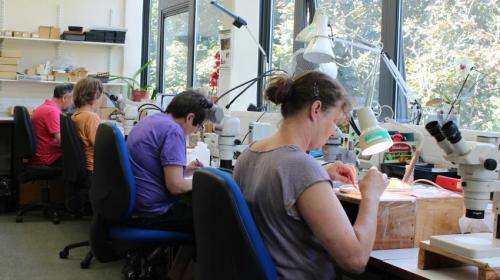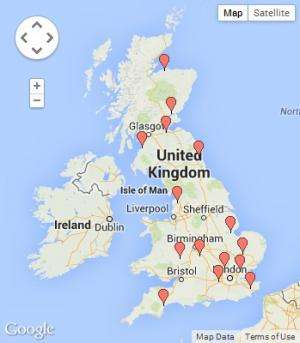Big science from small insects

Anniversaries are often a time to look back. But after taking stock of the past, it can be just as important to look to the future.
2014 saw the fiftieth anniversary of the Rothamsted Insect Survey (RIS) that has collected and cataloged more than 30M insects across the UK – information that informs farmers of when pest species might hit their crops, what animal disease vectors are flying, and is used by ecologists detecting the patterns that underpin the structure of biological communities.
Yet after 50 years its work is far from done. Indeed, the data become more and more valuable as the time series increases. As a changing climate alters the distribution and abundance of important crop pests, continued monitoring of new insect threats to economically important crops such as cereals is crucial. Many of the insects, principally aphids, also carry viral diseases that further undermine aspects of the UK's food security.
"The Rothamsted Insect Survey has amassed an incredible wealth of data and is now widely regarded as the most comprehensive and continual database in the world on terrestrial invertebrates," says RIS Project Leader Dr Richard Harrington from Rothamsted Research, an institute that receives strategic funding from BBSRC.
Supporting the survey's work into the 21st century, RIS is now funded as a BBSRC National Capability – an institute-based resource intended to benefit the wider scientific community. It designates the RIS as a repository of data and expertise that can be used by scientists in the UK and across the world.
Indeed, suction-traps of the RIS design are spreading across the world as other countries develop similar surveillance and warning mechanisms, opening opportunities for collaboration between growers and industry with entomologists interested in the fundamental mechanisms behind the spread of insect populations.
Research Impacts of the Rothamsted Insect Survey
Forecasts and pest control
RIS researchers have found strong relationships between winter temperature and the time that aphids first appear in the suction-traps, and their abundance. These relationships are used to forecast when pest aphid movement into crops is likely to start, and to predict the impacts of climate change on pest problems. The wealth of data over time has revealed that compared to 50 years ago, many aphids are flying a month or more earlier. These findings are disseminated in web and email bulletins that are issued on Fridays, picked up by relevant media, and then used by practitioners to guide aphid control programmes.

Insecticide resistance
Individual aphids are tested for their resistance to a range of insecticides; in particular major pests the peach-potato aphid Myzus persicae and English grain aphid Sitobion avenae. Molecular tools are used to detect the genetic mutations conferring resistance, and the findings are fed back to researchers in academia and industry. Recent analysis at Rothamsted has shown that resistance to pyrethroids is increasing in both England and Scotland.
Plant viruses
Aphids are particularly important vectors of crop viruses, which lower yields. RIS workers detect the presence of certain viruses in aphids and hence their potential as vectors. The traps in Scotland provide data in support of the Scottish Seed Potato Classification Scheme.
Pest insect population dynamics
Analysis of 5715 series of annual moth and aphid species abundance showed, for the first time, the critical importance of RIS' long time series data in the ability to detect density dependence – an important cornerstone of population dynamic theory that can be used to model and predict insect populations in space and time.
Testing theories of biodiversity

RIS data were used to test a controversial new theory of the dynamics of biodiversity; this 'Unified neutral theory of biodiversity and biogeography' was based on the assumption that trait differences between trophically similar species (growth rates in aphids for example) had no impact on their relative abundance or speciation rates. Data from RIS' moth light-trap network tested the model but did not fit well because ecological communities fluctuated more than expected.
Aphid winter attrition
The temperature at which aphids die is crucial to their overwintering success – it affects how they will infect crops. Aphids were known to supercool and to freeze at temperatures below -20C, but data from the suction-trap network suggested much higher temperatures were causing significant mortality to the mobile forms, probably as a result of membrane disruption.
Effects of climate change
RIS data have been used to detect effects of climate and other environmental changes on the abundance and seasonality of aphids and moths. They have found that, increasingly, aphids are overwintering in the mobile stages as opposed to laying eggs. Climate change is also implicated in some recent moth declines.
Evolution of plant defences
Europe-wide suction-trap data, combined with laboratory selection experiments, showed that different types of Arabidopsis thaliana, a plant much used in lab experiments, are selected according to the relative abundance of two specialist aphid species. This is significant because it demonstrates that pests can directly affect how their host-plants evolve in relatively short spaces of time.




















